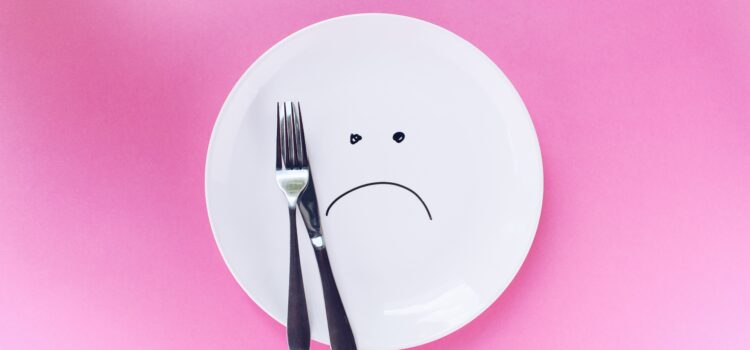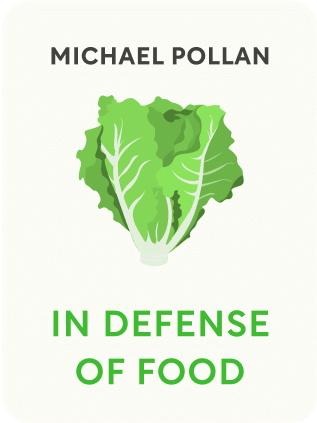

This article is an excerpt from the Shortform book guide to "In Defense of Food" by Michael Pollan. Shortform has the world's best summaries and analyses of books you should be reading.
Like this article? Sign up for a free trial here .
What’s your relationship with food? Would you describe it as healthy or unhealthy? What can you do to improve it?
Many people struggle to forge a healthy relationship with food. If you find it difficult to strike a balance between eating too much and too little, try eating by the following rules, 1) listen to your body, 2) don’t rush food, and 3) prepare your own food.
Keep reading to learn how to improve your relationship with food.
How to Improve Your Relationship With Food
The West is inundated with food. There are thousands of options of what to eat and a myriad of ways to eat it. Paradoxically enough, this abundance of choice is the very reason why so many of us have such a bad relationship with food, but you can repair your relationship with food if you adopt the following rules.
Rule #1: Listen to Your Body
When external cues drive your eating habits, you’re likely to eat more than you need. When you allow other senses to guide what and how you eat, you’re likely to eat less. Other senses can lead to the following questions:
- Is this food as pleasing to the nose as it is to the eye?
- Does the food still taste good, or am I just eating to finish?
- Am I still hungry or simply still eating?
Science suggests that it takes 20 minutes for the stomach to signal the brain when full, but Americans tend to eat meals at a faster rate. You can be finished gorging before your body has time to react. When you eat slowly, you allow the body to feel satisfied and act accordingly. This is likely what makes the French paradox so compelling.
Until our culture shifts to slower rates of eating and internal cues for guidance, the following manipulations of external cues can help: serve smaller portions, use smaller plates, repackage snacks into smaller sizes, use tall glasses, make healthy foods available and visible, stick unhealthy foods in the back, and serve food from cookware in the kitchen, rather than in serving dishes on the table.
Still, a complete shift to slower eating is the best option for many reasons, as the next rule suggests.
Rule #2: Don’t Rush Food
You gain more respect for the overall health of the food chain and promote food culture when healthy food is prepared and enjoyed intentionally. This belief is what the Slow Food Movement (Slow Food) was founded on. The movement was developed in Italy as a response to the hostile takeover of the Western diet in Rome when fast food chains were introduced in the 1980s. The movement seeks to reclaim and introduce the traditional culture of eating healthier foods consciously grown, prepared, and eaten communally.
Quality is the priority of Slow Food, for the belief is that a focus on quality will awaken an appreciation for sensory pleasures and bridge the expanding gap between eaters and food producers. The suggestion is that reestablishing an appreciation for food is the proverbial straw needed to break the back of fast-paced, individually driven societies, like ours.
Slow Food is a hard sell in America because it would require a shift in national culture along with food culture. We value success and hard work over everything else, including time off and community bonding. Fast food fits this frenzied, distracted way of life. We don’t want to slow down to think about what to eat, let alone what is in what we’re eating, which is precisely what food manufacturers are counting on.
Take the fast-food hamburger. This hamburger is engineered with flavorings to make it more succulent. It is made to be devoured, thereby reducing the amount of time you have to think about where it comes from. You likely wouldn’t get past the first bite if you considered the conditions of the stockyards, slaughterhouses, or thousands of workers toiling at precarious factory jobs for minimum wage.
In contrast, a grass-fed burger made at home is more enjoyable to eat. First, it’s healthier for you. Second, with the knowledge of where the beef comes from, you can imagine pastured cows grazing and skilled workers humanely producing the meat. The food feels better intellectually and tastes better, giving you a greater sense of appreciation for what you’re eating.
Appreciation for food is found when eating becomes intentional, rather than habitual. Even something as simple as growing a few herbs at home can help you feel more connected to your food, which leads to the next rule.
Rule #3: Prepare Your Own Food
Cooking your own food creates a myriad of benefits for your health and the health of your culture. This trial and error gives you a familiarity with the food and brings you closer to your food heritage and those of other cultures.
This familiarity helps you gain an instinct about food that no amount of time spent in the grocery aisles reading labels can provide. And the last thing you’ll be thinking about is your health or the type of nutrients a food contains. You won’t wonder if the food is healthy because you will know simply by looking and feeling the food that it is alive and vital. You will learn what flavors pair well and cherish them for their taste, not the inherent health benefits. You will have confidence in what you’re eating and how it was made because you made it.

———End of Preview———
Like what you just read? Read the rest of the world's best book summary and analysis of Michael Pollan's "In Defense of Food" at Shortform .
Here's what you'll find in our full In Defense of Food summary :
- Why eating a Western diet is killing you
- How the rise of low-fat foods contributed to the rise of obesity and diabetes
- What to eat if you want to restore a healthy relationship with your food






